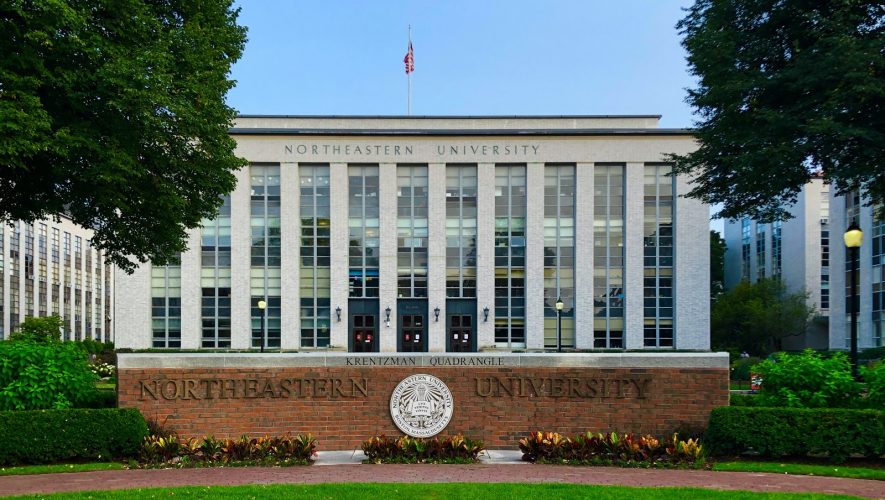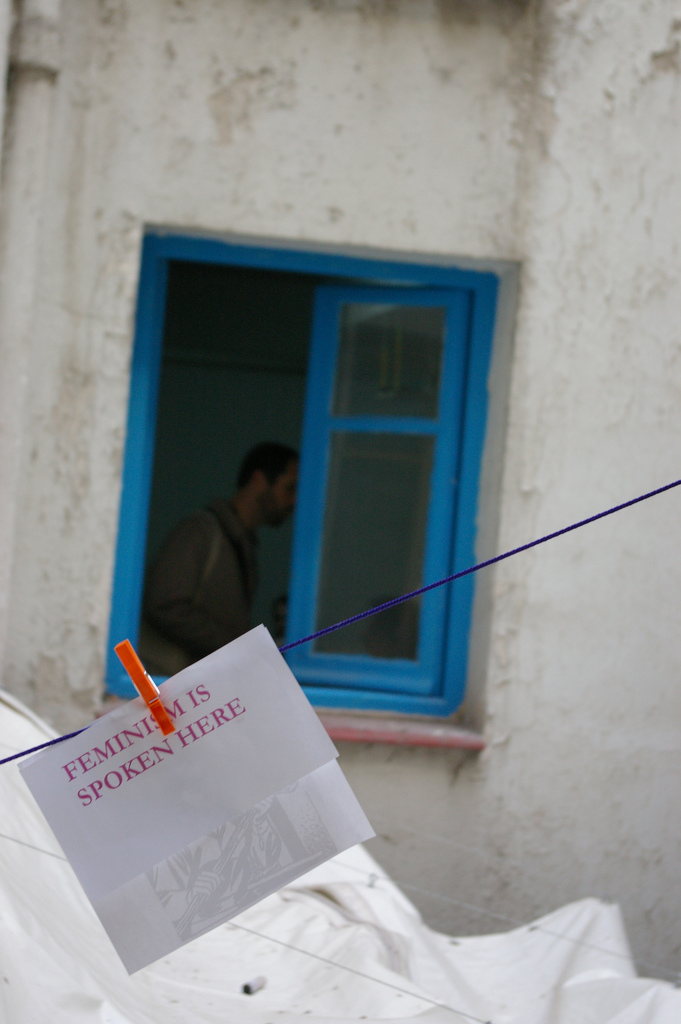Extensive research demonstrates that COVID-19 does not pose a serious risk to most students.
Responding to recent upticks in COVID-19 cases among young adults, colleges nationwide have renounced their intentions to house students for the fall semester. Of colleges that re-opened, many have reverted to online learning following campus outbreaks. These decisions, while seemingly understandable, ignore key characteristics of COVID-19 and college students that render such drastic measures unnecessary—the virus tends to be neither severe nor life-threatening for college students.
COVID-19 hospitalization rates for college-age students are low: only 0.07 percent of American 18-to-29-nine-year-olds are hospitalized. This is higher than the flu hospitalization rate for 18-to-49-year-olds (0.03 percent), but slightly lower than the flu hospitalization rate overall (0.07 percent) and much lower than that for zero-to-four-year olds (0.09 percent) as well as people over fifty.
Likewise, the COVID-19 infection fatality rate (IFR)—which measures one’s chance of dying post-infection—is low for those below the age of thirty-four. One working paper by the National Bureau of Economic Research estimates it to be 0.01 percent compared to the flu’s IFR at 0.02 percent. College students are no more likely to die from COVID-19 than they are from the flu, especially since they land squarely on the mild end of the symptom-severity spectrum.
Fighting COVID-19 the Right Way
Since college students mostly live with each other, colleges should aim to protect specific susceptible populations on campus (e.g. professors and staff) and the surrounding community. Populations are susceptible if they consist primarily of older adults, immunocompromised people, or those with serious pre-existing conditions like cancer, kidney disease, obesity, or sickle cell disease.
To cut the risk of transmission from students to professors and staff, colleges could mandate masks in non-dormitory buildings, socially distance professors from students during lectures, and provide all staff with masks and face shields. Regular campus-wide testing can monitor transmission rates. Requiring masks and social distancing off-campus would also protect members of the broader community.
On the other hand, overprotective measures—like mask mandates in dormitories and during student gatherings, the suspension of in-person clubs and sports, and the de-densification of all classes regardless of size—superfluously restrict the college experience. This is no small matter. When a group of students spend years living, learning, and having fun together, they form long-lasting and meaningful relationships. Unnecessarily denying students this opportunity is neither right by them nor fair to them.
On- and off-campus precautions require joint enforcement by community members and colleges. Enforcement could consist of deterrence by harsh disciplinary consequences or the gamification of rule-following. In the former, community members can act as informants and be provided a tip line to call if students are behaving unsafely around non-students. College administrators would then be justified suspending or expelling students once a pattern of violations is established by multiple informants. In the latter, colleges could provide awards to students, classes, clubs, and residences that restrict interactions with off-campus and susceptible populations, or who generally promote the safety and well-being of those around them. Awards could range from packaged food from high-end restaurants to tuition reductions; colleges could partner with local businesses to provide worthwhile benefits.
Herd Immunity and Its Opposition
Preliminary research from Hebrew University suggests that allowing COVID-19 to spread between students, but not to susceptible populations, may allow students to develop herd immunity. In fact, herd immunity may be the only way to prevent future viral spread considering the lack of a vaccine and many Americans’ disinterest in taking it once available.
Opponents of this approach often assume that lasting immunity does not develop in recovered patients. While this concern is valid, vaccines rely on a somewhat similar process of infection and recovery to develop lasting immunity, so there is no guarantee a mass-produced vaccine would be effective either. In the event that people cannot develop immunity, there is simply no way to protect oneself. Considering that indefinite lockdowns are unsustainable, people will just be forced to live with COVID-19.
Nevertheless, early reports that COVID-19 antibodies—which fight the virus—decline after infection are misleading. In response to COVID-19, our bodies produce two different types of antibodies. One type (anti-nucleocapsid antibody) is produced for a relatively short time and is not necessarily related to lasting immunity, while the other (anti-RBD antibody) lingers in the bloodstream and prevents COVID-19 from attacking our cells. Most antibody tests are designed to recognize the former, so diminished antibodies do not necessarily translate to reduced immunity.
In addition, once the virus has been defeated, it is not uncommon for dormant viral particles to reactivate later in life and cause mild recurrences. This concept is known as viral latency, which occurs in diseases ranging from chickenpox and shingles to mononucleosis. Recurrences tend to be milder than the initial infection, so while annoying, they tend to be less dangerous. This is evidenced by mononucleosis, a disease which infects 95 percent of people at least once. While initially painful, its chronic impact is minimal.
Furthermore, the supposed lack of lasting immunity may simply result from tests recognizing dead viral particles circulating in recovered patients and reporting false recurrences.
Even reinfections caused by an alternative strain of COVID-19 are not a cause for concern. There are currently two strains of the virus: one that was initially identified in Asia (D614) and another that mutated as it spread through Europe to the United States (G614). The mutated G614 strain is ten times more infectious than the original, but has already spread throughout most of the US. This means that new recurrences stateside are caused by the less infectious and threatening initial strain. On top of this, it is common for COVID-19 antibodies to exhibit cross-reactivity. That is, antibodies to one coronavirus offer some protection against similar coronaviruses. This means antibodies from one strain are likely to reduce the severity of another.
Others voice concern for immunocompromised students or students with pre-existing health conditions. There is a simple solution: protect those who need and want protection.
Students should be allowed to assess their own level of risk and indicate a preference for COVID-19 protection through an online system or some other mechanism. In this system, only students with underlying health concerns or living with susceptible relatives would qualify for protection, enabling colleges to provide individually tailored services to those who need them. Selected students could be placed in a protected dorm with single rooms, more frequent cleaning, a mask requirement, and improved air filtration. They could attend de-densified classes in protected sections and receive food deliveries. If necessary, a hybrid online and in-person learning model could be employed. However, voluntary choices made by students that increase their risk, such as smoking or vaping, would not qualify them for protection; pursuing herd immunity on campus does not absolve students of their responsibility to practice healthy habits and keep safe.
Opposition to herd immunity also comes from the worry that COVID-19 has unknown side effects. As cases have risen, so too have the number of children with Multisystem Inflammatory Syndrome (MIS-C). Other data has uncovered that patients recovering from severe bouts of COVID-19 experience significant lung impairments. Still, anxiety over long-lasting side effects is likely overblown—COVID-19 is held to a different standard than other diseases and their treatments.
MIS-C, while sometimes dangerous, is extremely rare. The Mayo Clinic points out this fact, as well as that most children who contract it eventually recover with medical care. MIS-C also primarily affects younger children; 84 percent of cases between March 15 and May 20 were observed in kids aged fourteen or less.
Similarly, lung damage from COVID-19 is uncommon and depends heavily on the severity of symptoms. Because college students tend to experience relatively mild symptoms, the risk of significant lung damage is likely very low. Additionally, as lung disease expert Panagis Galiatsatos points out, after even a serious case of COVID-19, lung recovery is possible. With time, severe damage will fade in young people as new tissues grow and heal affected areas.
The concern about unknown side effects of COVID-19 is ironic because this level of scrutiny is not afforded to most other diseases or their prescribed medications. For example, community-acquired pneumonia presents a massive long-term burden for patients. Ten years after diagnosis, patients are much more likely to be hospitalized, visit the emergency room, and die than the general population.
Furthermore, the very antibiotics used to treat pneumonia have their own long-term side effects. Many bacteria have evolved symbiotically with larger organisms; that is, both organisms benefit each other. When helpful bacteria are collaterally killed by antibiotics intended to stop harmful bacteria, critical regulatory systems are thrown into disarray. It is possible that antibiotics promote obesity, among other more serious conditions including Alzheimer’s disease, cardiovascular disease, anxiety, and depression. Yet, despite these risks, medical professionals prescribe antibiotics at unnecessarily high rates, primarily due to patient demand.
None of this is to say that schools should be shut down to prevent the spread of pneumonia (an education is worth the risk of infection with pneumonia), or that people should stop taking antibiotics altogether (antibiotics are necessary despite their risks). It is to say that the fear of COVID-19’s chronic impact is inflated when put in the context of other diseases and their treatments. Especially for college students, the long-term risks of COVID-19 are, in all likelihood, relatively low.
The Overlooked Cost of School Closures
School closures—and the resulting toxic combination of social isolation and family pressures —take a devastating toll on students’ mental health and academic performance.
Over the past decade, rates of anxiety and depression have skyrocketed among college students, with self-reported cases of severe depression rising 125 percent and cases of moderate-to-severe anxiety rising 92 percent between 2013 and 2018. Extensive psychological research demonstrates that social isolation compounds existing—and contributes to new—psychiatric distress. Long-term effects of social isolation include depression, accelerated cognitive decline, poor cardiovascular function, impaired immunity, and heightened risk of premature death.
A recent survey already bears out such research in the context of COVID-19; after many schools closed, less than 40 percent of adolescents in California rated their mental wellness to be the same as pre-pandemic levels. The CDC also reported in June that younger adults were experiencing “disproportionately worse mental health outcomes, increased substance use, and elevated suicidal ideation,” in response to the pandemic. The impact of this widespread emotional distress is beginning to manifest as drug overdoses; overdose rates among young adults have doubled over the last year.
Besides mental health, the shift to online education disproportionately impacts low-income students. Often, they do not have reliable access to the technology needed for virtual classes. Many have no choice but to rely on old laptops or tablets sporting damaged hardware, ancient software, and withering batteries. Inconsistent internet access and limitations on cellular data usage only compound these problems. In addition, when these students return home, some will be confronted with homelessness, hunger, abuse, and family responsibilities like babysitting siblings. Succeeding academically is nearly impossible when repeatedly faced with such unpredictable, traumatic, and taxing circumstances.
The consequences of these disparities can already be seen. Placed at an academic disadvantage relative to their peers, lower-income students at Arizona State University are 55 percent more likely than higher-income students to delay graduation; in fact, the gap between these students’ expected GPAs has nearly doubled since the start of the pandemic.
There are risks to reopening. Many students will become infected, some students will be hospitalized, and some may even die. However, in the grand scheme of things, COVID-19 likely will not be any more harmful to college students than other diseases. By any reasonable standard, the enormous risk posed by school closures to students’ mental well-being and academic success outweighs the small health risk COVID-19 poses to them. Barring the widespread transmission of COVID-19 to susceptible populations on campus or in the surrounding community, colleges should remain open.



